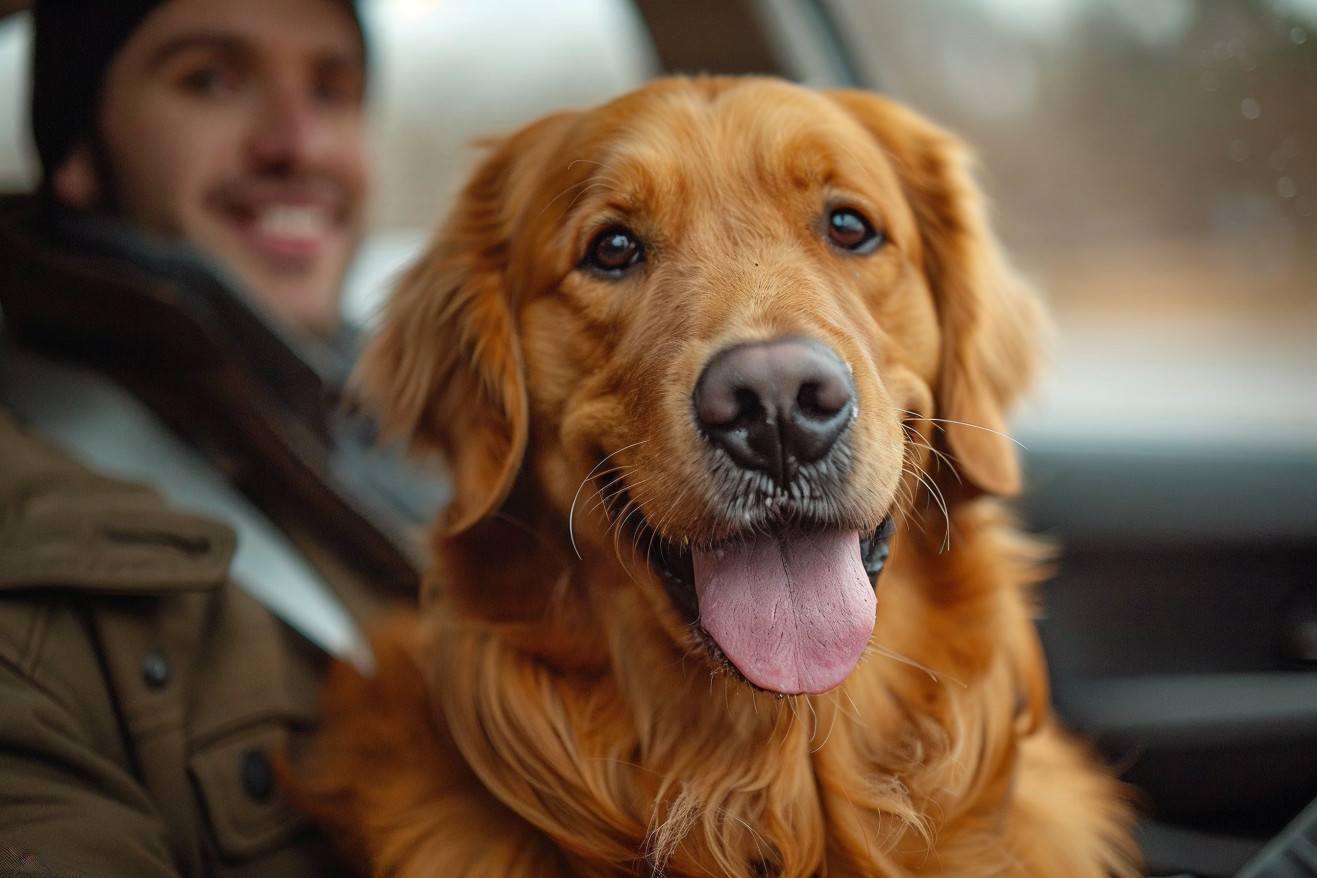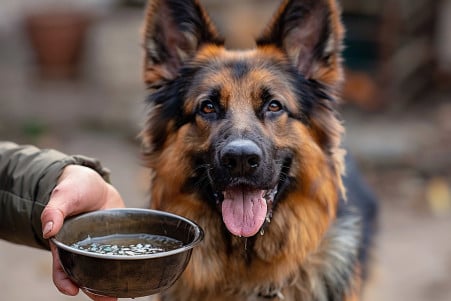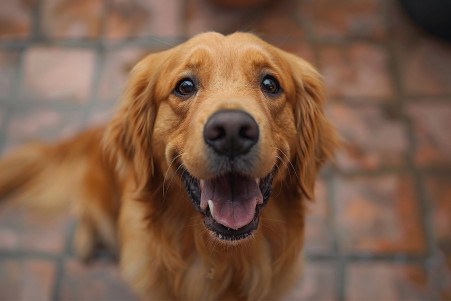Why Do Dogs Pant in the Car? Causes and Solutions
14 April 2024 • Updated 13 April 2024

If you’ve ever looked at your dog in the car and wondered why dogs pant in the car, you’re not alone. Dogs pant in the car for a number of reasons, including the need to cool down, which is especially important in the warm, enclosed space of a car. But panting can also be a sign of stress, anxiety, or even motion sickness, all of which can be brought on by the experience of riding in a car. In other words, panting in the car is a way for dogs to regulate their body temperature and express any stress or discomfort they may be feeling.
This article will cover the physical and emotional causes of panting in the car and offer solutions to help your dog feel better on future car rides. It combines information from veterinarians and animal behaviorists to give you a well-rounded understanding of this common issue. Once you know why dogs pant in the car, you’ll be better equipped to meet your dog’s needs and help them have a better time in the car.
Why do dogs pant in the car?
Heat: The Main Reason Dogs Pant in Cars
The greenhouse effect can cause cars to heat up quickly, and when sunlight comes through the windows, it's absorbed and turned into heat, but there's no way for that heat to escape, so the car gets hotter and hotter. This is why dogs start to overheat and pant a lot in the car.
Panting is a dog's way of cooling down through evaporative cooling, which is the only way dogs can sweat, according to Vetster. Dogs pant to help evaporate saliva and to bring cooler air into their bodies through their respiratory system.
There are certain things that can make dogs more likely to overheat and pant in the car. For example, brachycephalic dogs, or dogs with short noses, like Pugs and Bulldogs, have a harder time breathing and are more likely to overheat, according to WebMD. In addition, older dogs, overweight dogs, and dogs with heart or lung conditions are also at a higher risk.
It's important for dog owners to know the signs of overheating, which include panting even when the dog is at rest, drooling, lethargy, and disorientation. If overheating is left untreated, it can quickly turn into heatstroke, which is life-threatening and requires immediate medical attention, according to Vetster. By keeping an eye on the temperature in the car and watching for signs of distress, dog owners can make sure their dogs don't get to this point.
Stress, Anxiety, and Motion Sickness: Emotional Causes of Panting
Dogs may be dealing with high levels of stress, anxiety, and even motion sickness during car rides, all of which can cause them to pant more than usual. As GoPetFriendly points out, the strange surroundings, confinement, and movement of a car can all cause these emotional responses in dogs, and panting may be a way for dogs to deal with the stress and anxiety that comes with riding in a car.
In fact, Preventive Vet explains that dogs who are prone to motion sickness will often pant and drool in the car, even if they don't end up vomiting. In addition, the American Kennel Club says that dogs who are sensitive to the sights and sounds of the car can also pant, especially if they are alert dogs or dogs in herding breeds.
By learning to recognize the signs of anxiety or motion sickness, which can include drooling, restlessness, and whining, dog owners can work to help their dogs feel better and more secure during car rides. This can involve using a variety of training and desensitization methods, as well as calming products and medications, to help dogs develop a more positive association with car rides.
Staying Chill: How to Keep Dogs From Overheating in the Car
Ensuring proper ventilation and air conditioning are essential to keeping the car at a comfortable temperature and preventing overheating, according to Pets Around the World. Other ways to help keep your dog cool while in the car include using cooling mats, frozen treats, or damp towels. Boomerang Dogs suggests products like self-cooling gel pads and reflective shades to help keep the car cool.
Stopping for water and not feeding your dog before or during the journey can also help prevent overheating, says the RSPCA. However, the most important thing to remember is to never leave your dog alone in a car, even for a few minutes, because the temperature inside a car can rise to dangerous and potentially fatal levels very quickly.
Calming Techniques: How to Soothe Dogs with Anxiety and Motion Sickness in Cars
One way to reduce anxiety is to gradually desensitize your dog to car rides using positive reinforcement and rewards, as the American Kennel Club explains. In addition, creating a safe, familiar space in the car, such as a crate or carrier, can help your dog feel more comfortable.
Preventive Vet recommends trying calming aids like pheromone diffusers, anxiety vests, or supplements that your vet suggests. These products can help manage the stress and discomfort that dogs who are prone to car sickness or anxiety may experience when they travel.
It’s also important to make sure that you take your dog out of the car regularly on long trips so they can move around and go to the bathroom, according to the American Kennel Club. If your dog’s travel anxiety or car sickness is severe, you may need to work with a professional dog trainer or behaviorist to create a customized plan to help your dog work through their fears.
If you use these calming techniques, you can help your dog have a better experience when they’re in the car. That said, if your dog continues to pant excessively or seems to be very uncomfortable, it’s important to take them to the vet right away to make sure there isn’t an underlying medical problem.
When to Notice Excessive Panting and Go to the Vet
If your dog is panting heavily when they are at rest or in a cool environment, they may be suffering from an underlying health issue, according to Vetster. Dogs may pant excessively due to respiratory issues, heart disease, or metabolic disorders like Cushing's disease.
If your dog is panting heavily and is also experiencing other symptoms like lethargy, vomiting, or pale or blue gums, you should take them to the vet immediately, says Lincolnway Veterinary Clinic as this could be a medical emergency. For example, heatstroke can be fatal if it is not treated quickly.
Make sure to tell your vet about your dog's panting, including when it happens and if there are any other symptoms that occur at the same time, so that they can diagnose and treat your dog properly, says TexVetPets. This may include tests, medications, or even surgery to fix the underlying issue.
If you notice that your dog is panting more than usual, make sure to take them to the vet so that they can get the care that they need.
Conclusion: Ensuring Comfortable and Safe Car Rides for Your Furry Companion
While panting is a normal part of a dog's behavior, excessive panting in the car can be a sign of overheating, stress, or a medical issue. By learning about the potential causes of panting and how to prevent them, dog owners can make sure their pets are safe and comfortable when they're in the car.
Making sure the car is well-ventilated, taking water breaks, and using other calming methods can help with some of the most common causes of panting, such as overheating and anxiety. However, if your dog continues to pant excessively or seems to be in distress, make sure to take them to the vet right away to rule out any medical issues.


